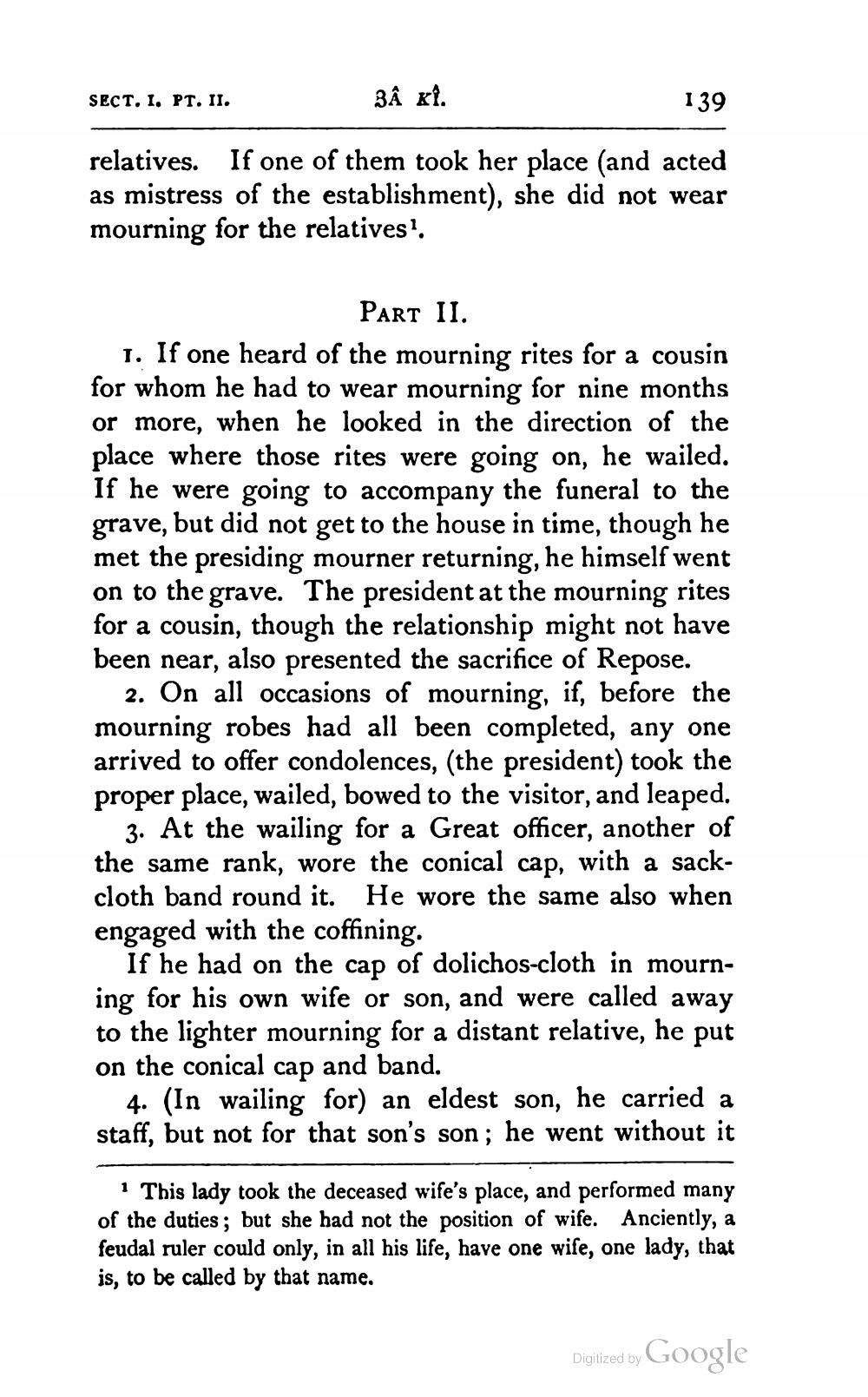________________
SECT. 1. PT. II.
ZÂ ki.
139
relatives. If one of them took her place (and acted as mistress of the establishment), she did not wear mourning for the relatives?
Part II. 1. If one heard of the mourning rites for a cousin for whom he had to wear mourning for nine months or more, when he looked in the direction of the place where those rites were going on, he wailed. If he were going to accompany the funeral to the grave, but did not get to the house in time, though he met the presiding mourner returning, he himself went on to the grave. The president at the mourning rites for a cousin, though the relationship might not have been near, also presented the sacrifice of Repose.
2. On all occasions of mourning, if, before the mourning robes had all been completed, any one arrived to offer condolences, (the president) took the proper place, wailed, bowed to the visitor, and leaped.
3. At the wailing for a Great officer, another of the same rank, wore the conical cap, with a sackcloth band round it. He wore the same also when engaged with the coffining.
If he had on the cap of dolichos-cloth in mourning for his own wife or son, and were called away to the lighter mourning for a distant relative, he put on the conical cap and band.
4. (In wailing for) an eldest son, he carried a staff, but not for that son's son; he went without it
1 This lady took the deceased wife's place, and performed many of the duties; but she had not the position of wife. Anciently, a feudal ruler could only, in all his life, have one wife, one lady, that is, to be called by that name.
Digitized by Google




